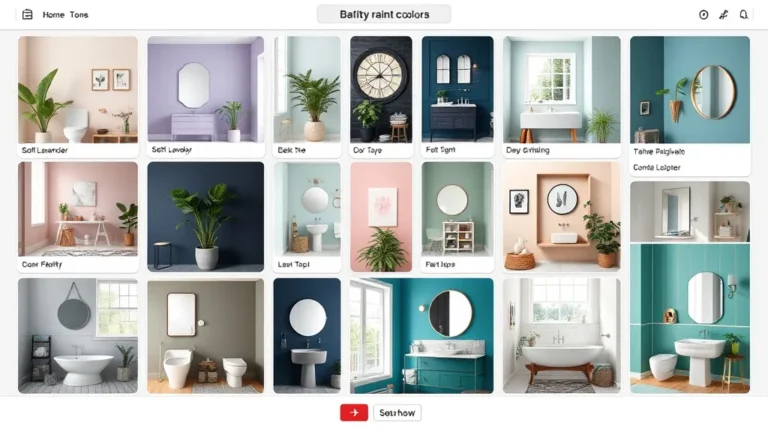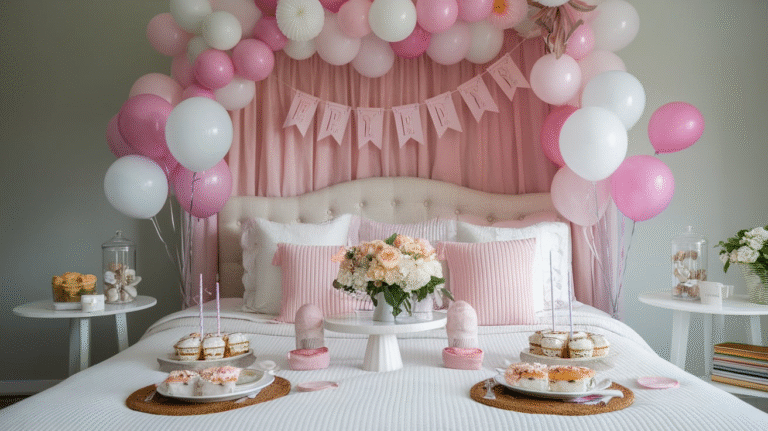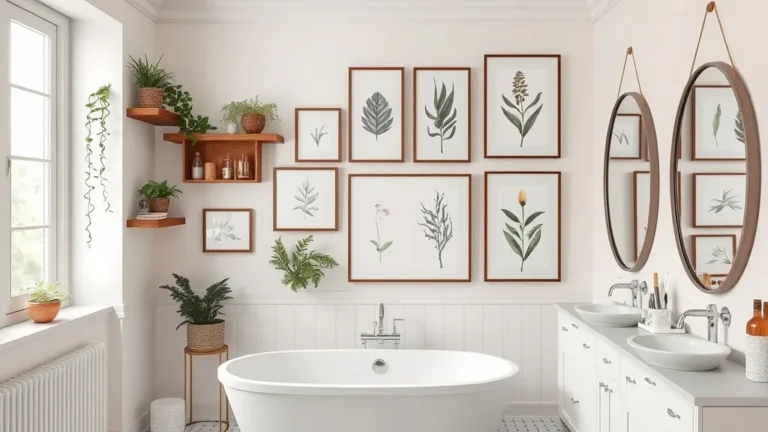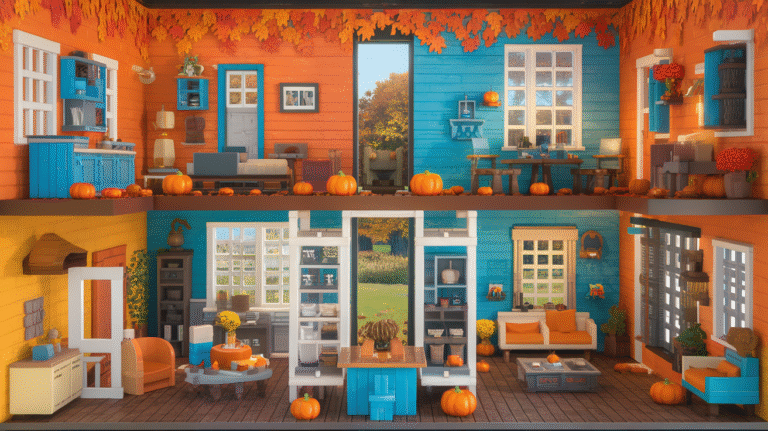19 Rectangle Living Room Layout Ideas for Cozy Vibes

Designing a rectangle living room layout is like solving a giant puzzle—you’ve got four walls, limited space, and a mix of furniture that needs to live together in harmony.
But when you get it right, the payoff is huge: a living room that feels inviting, balanced, and cozy enough to binge-watch your favorite shows or host a family game night.
1. Floating Furniture Away from the Walls
One of the biggest mistakes in rectangle living rooms is pushing everything against the walls. It makes the room feel like a dance hall instead of a living space.
Try floating your sofa a few feet away from the wall and anchoring it with a rug. Add a slim console table behind it for extra storage or décor.
2. Create a Central Conversation Zone
If your rectangle living room is long, don’t let it turn into a hallway of furniture. Instead, center your seating arrangement around a rug and coffee table. Position the sofa across from two armchairs to form a conversational square.
Statistically, people spend 68% of their living room time in the main seating area, so focusing your layout on that central hub just makes sense. It’s functional, visually balanced, and it gives the room purpose.
3. Divide the Room into Two Zones
Rectangle living rooms often feel too stretched out. One trick I love is dividing the space into two functional zones. For example:
- One half as a seating area.
- The other half as a reading nook, small office, or play area.
Use a rug, bookshelf, or sofa placement to signal where one zone ends and the other begins. It’s like giving your living room a “split personality,” but in the best way possible—it becomes multifunctional without looking cluttered.
4. Use a Sectional Sofa for Balance
A sectional sofa is a rectangle living room’s best friend. It naturally follows the shape of the room and eliminates awkward gaps. In narrow layouts, go for an L-shaped sectional pushed into a corner, leaving space for a walkway.
If your room is larger, a U-shaped sectional creates a cozy nest in the center. Add a big ottoman instead of a coffee table to make it extra lounge-friendly. I once had friends fight over the corner spot in my sectional—it’s that cozy.
5. Add Symmetry for Calmness
Symmetry works wonders in rectangle rooms. Place two sofas facing each other with a coffee table in the middle, or mirror two chairs on either side of a fireplace.
Symmetry brings visual calmness, which is why high-end hotels often use it in their lobbies. If you’re someone who loves order, this layout will give you that neat, put-together vibe every time you step in.
6. Float a Rug to Define the Space
In a rectangle room, a rug acts like a stage—it defines where the action happens. Go for a large rug that fits under the front legs of all your furniture. This instantly pulls your layout together, even if the room is long or oddly proportioned.
Studies show that well-placed rugs can make a room feel up to 25% more cohesive, which makes sense—they give your furniture boundaries without actual walls.
7. Angle Furniture for Interest
Here’s a secret: rectangle rooms don’t have to be all about straight lines. Try angling your sofa or chairs slightly toward the center. This softens the rigid geometry of the room and creates a more organic flow.
It’s a subtle shift, but it can make the room feel more lived-in and less like a furniture showroom.
8. Use Narrow Furniture for Tight Spaces
If your rectangle living room is on the narrow side, bulky furniture will swallow it whole. Instead, pick slim-profile sofas, open-legged chairs, and glass coffee tables.
Visually light furniture helps the room breathe. I once swapped a chunky recliner for a narrow accent chair, and suddenly the room felt twice as wide.
9. Add a Built-In Bench or Window Seat
Rectangle rooms with windows at one end often feel lopsided. Solve this by adding a built-in bench or window seat beneath the window. Not only does it balance the room, but it also adds extra seating without cramping your layout.
A bonus? It’s the coziest reading spot—you’ll probably find yourself camped out there with a blanket more often than you expect.
10. Frame the Focal Point
Every living room needs a focal point—whether it’s a fireplace, TV, or large window. Arrange your furniture around it so that the eye naturally lands there.
For example, position the sofa facing the fireplace, then flank it with chairs angled inward. This gives the room structure and keeps the layout intentional. Without a focal point, rectangle rooms risk feeling like “furniture soup.”
11. Try the Sofa + Chaise Combo
If a sectional feels too bulky, go for a sofa paired with a chaise lounge. Place the sofa along one wall and the chaise opposite or adjacent to it.
This combo adds flexibility while still offering lounge-worthy comfort. Plus, a chaise takes up less space than a full sectional, making it ideal for narrower rectangles.
12. Add a Console Table Behind the Sofa
If you’re floating a sofa in the middle of the room, don’t leave the back bare. A console table behind it adds depth, storage, and style.
You can decorate it with lamps, books, or plants. Functionally, it creates a subtle divider, making the space feel finished. I once used this trick in a client’s narrow living room, and they said it instantly made their space look like a designer had touched it.
13. Layer in Extra Seating with Stools or Poufs
Rectangle living rooms sometimes don’t have space for multiple big chairs. That’s where stools and poufs come in handy. They’re flexible, lightweight, and can be moved around when guests arrive.
They also keep the layout uncluttered while still adding coziness. I like to tuck them under the coffee table and pull them out when needed—like hidden little surprises.
14. Use Lighting to Shape the Layout
Lighting isn’t just about brightness—it can shape your entire room. In rectangle layouts, use layered lighting:
- Overhead lighting for general glow.
- Floor lamps to highlight corners.
- Table lamps to create intimacy.
The right lighting can visually shorten or widen a rectangle room. For example, wall sconces on both ends can make the space feel more balanced.
15. Embrace a Minimalist Layout
Sometimes less really is more. Instead of cramming in multiple sofas and chairs, try a minimalist approach: one sofa, one chair, and a well-placed coffee table.
Minimal layouts give rectangle living rooms breathing space, and they often feel more modern. According to design surveys, 58% of homeowners say they enjoy their rooms more when they feel uncluttered.
16. Create a TV-Friendly Setup
Let’s be honest: for many of us, the TV is the real focal point. In a rectangle living room, position the sofa facing the TV with chairs angled toward it. Use a media console to ground the wall and keep cables tidy.
If you’ve got a long room, consider mounting the TV on the shorter wall. This prevents your setup from feeling like a movie theater with rows of seating.
17. Break Up Long Walls with Décor
Rectangle rooms often have long, intimidating walls. Break them up with art groupings, shelves, or plants.
Instead of one oversized painting, try a gallery wall or vertical shelving to create rhythm along the wall. This helps balance the space and makes it feel more intimate.
18. Add Movement with Round Elements
Since everything in a rectangle room is straight lines, balance it out with round furniture: a circular coffee table, round rug, or curved armchairs.
Round shapes soften the rigid geometry and add visual flow. I once swapped a rectangular coffee table for a round one, and suddenly the room felt like it “exhaled.”
19. Layer with Textures for Coziness
Even the best layout can feel flat without texture. Add plush rugs, chunky knit throws, woven baskets, and velvet cushions. These layers make the room feel warm and lived-in.
Texture tricks the senses—it makes a structured rectangle room feel more inviting, like slipping into your favorite sweater after a long day.
Conclusion
Designing a rectangle living room layout isn’t about rigid rules—it’s about working with what you have and making it feel cozy, functional, and stylish.
From floating furniture to dividing the room into zones, each idea here gives you tools to transform your space.




